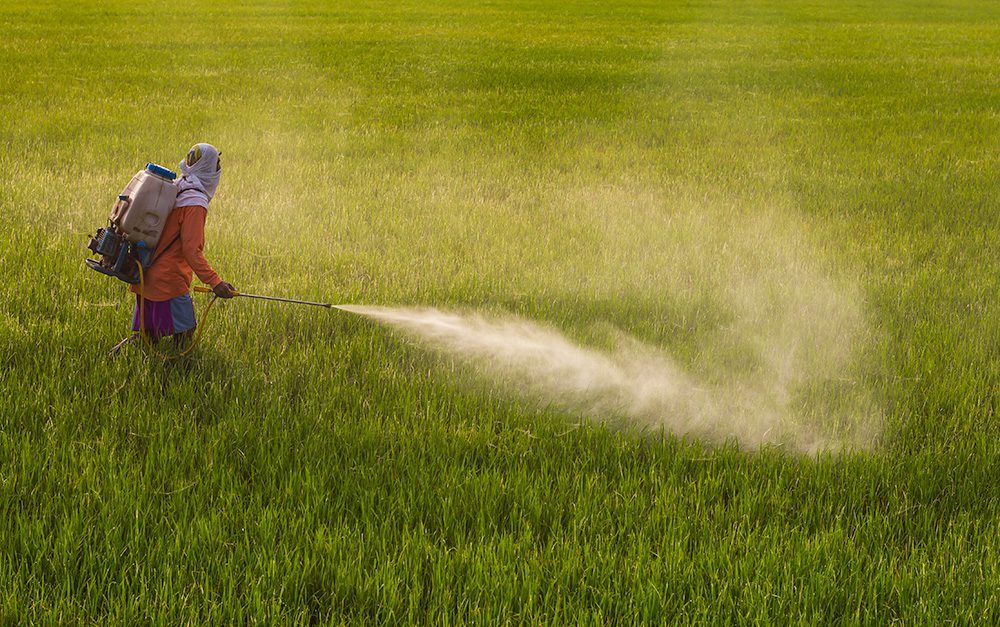As pollinators of flowering crops, bees play an integral role in many primary production systems and are an essential primary industry. Agricultural chemicals, such as pesticides, make bees vulnerable to poisoning and death[1].

There are several ways that honey bee poisoning can occur, such as when:
A chemical was used on crops that are flowering, and foraging bees are exposed to contaminated foliage, nectar, or pollen;
A chemical was used on a crop that is not flowering, but bees are foraging other plants in the target area that are flowering;
A chemical is directly applied to bees that are present in or flying over the target area;
Bees' access to water that contains pesticide residues or chemical spray drift occurs onto bees, hives, or flowering plants.
Bees can also take contaminated pollen or nectar back to the hive and cause the poisoning and death of the entire colony.
"Pesticide" is a broad term denoting any substance used to eliminate pest species and can include insecticides, herbicides, fungicides, and nematicides. Pesticides represent a diverse array of chemical classes with different modes of action, and as such, examining the effects of pesticides on honey bees is not a straightforward endeavor. Adding further complication, honey bees encounter many different chemicals simultaneously owing to their ubiquity in commercial pollination, generalist foraging strategy, and large foraging ranges that can cover hundreds of square kilometers. Much work has been done examining the acute toxicity and lethal dosages of these pesticides, as regulatory agencies require such measures for product registration. Still, bees often encounter pesticides at sublethal doses in their environment. Even these lower doses can produce various effects in bees, including impairments to behavior, learning and memory, longevity, and immune function.
Organophosphates and carbamates are widely used in agriculture and pest prevention and disrupt nerve function by inactivating acetylcholinesterase, an enzyme used to clear acetylcholine neurotransmitters from the synapse. Both chemicals have a broad range of toxicity towards honey bees. Still, one of the most commonly used in crop protection, chlorpyrifos, is highly toxic to bees and often found in hive materials. Even at doses far below the LD50 (i.e., the dosage that kills half of the subjects), chlorpyrifos negatively impacts bees' appetitive olfactory learning and memory. Likewise, the organophosphate naled is mainly used to control mosquito populations, and incidental exposure in honey bees can lead to increased mortality and lower honey production. Organophosphates and carbamates have been linked to many bee poisoning incidents in the UK[2].
Pyrethroids are another popular insecticide class similar to the natural pyrethrin compounds produced in chrysanthemum plants. They target the insect nervous system by delaying the closure of voltage-gated sodium channels, leading to the loss of motor function, paralysis, and ultimately death. They also display a broad range of toxic effects on honey bees. Among the most commonly encountered by bees are bifenthrin and lambda-cyhalothrin. Bifenthrin is used in orchard agriculture and other sectors and, at sublethal doses, can impair larval development and queen fecundity. Meanwhile, Lambda-cyhalothrin is used to protect various crops and, at sublethal doses, has been shown to impair honey bee worker longevity, homing ability, and learning and memory.
Honey bees also encounter non-insect-targeting pesticides, such as herbicides and fungicides, which were long presumed to have little to no effect on bees. However, more recent studies suggest they pose some risk. Herbicides can indirectly impact honey bee health by limiting the availability of diverse floral sources, thus compromising the bees' nutritional state, which can lead to further compromises to immune system function. For example, glyphosate is widely used to eliminate weeds in corn and soy production, but it can disrupt honey bee gut microbiota, which plays essential roles in immunity and weight gain, as well as affect larval development and worker behavior.
[1] Gyan P Harwood, Adam G Dolezal. “Pesticide-Virus Interactions in Honey Bees: Challenges and Opportunities for Understanding Drivers of Bee Declines.” Viruses-Basel (2020).
[2] Noori Al-Waili. “Antibiotic, pesticide, and microbial contaminants of honey: human health hazards.” The Scientific World Journal (2012): 930849.
